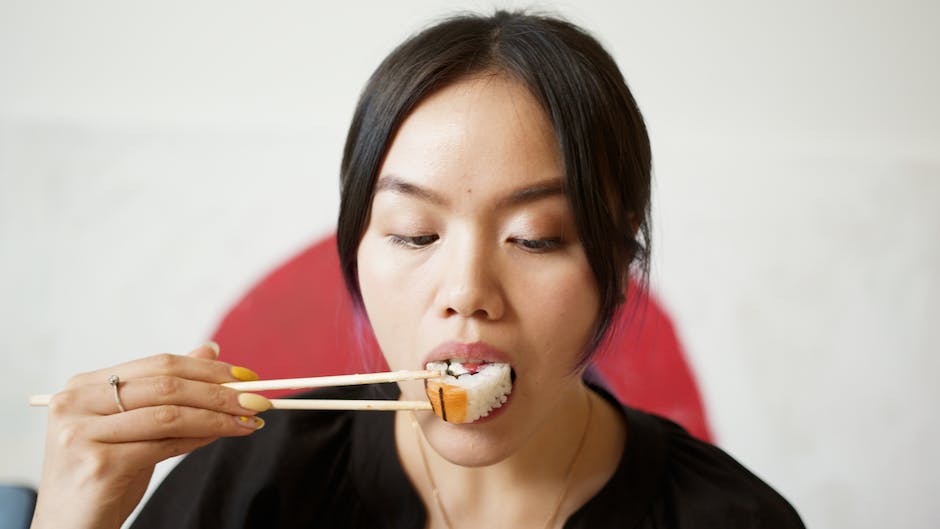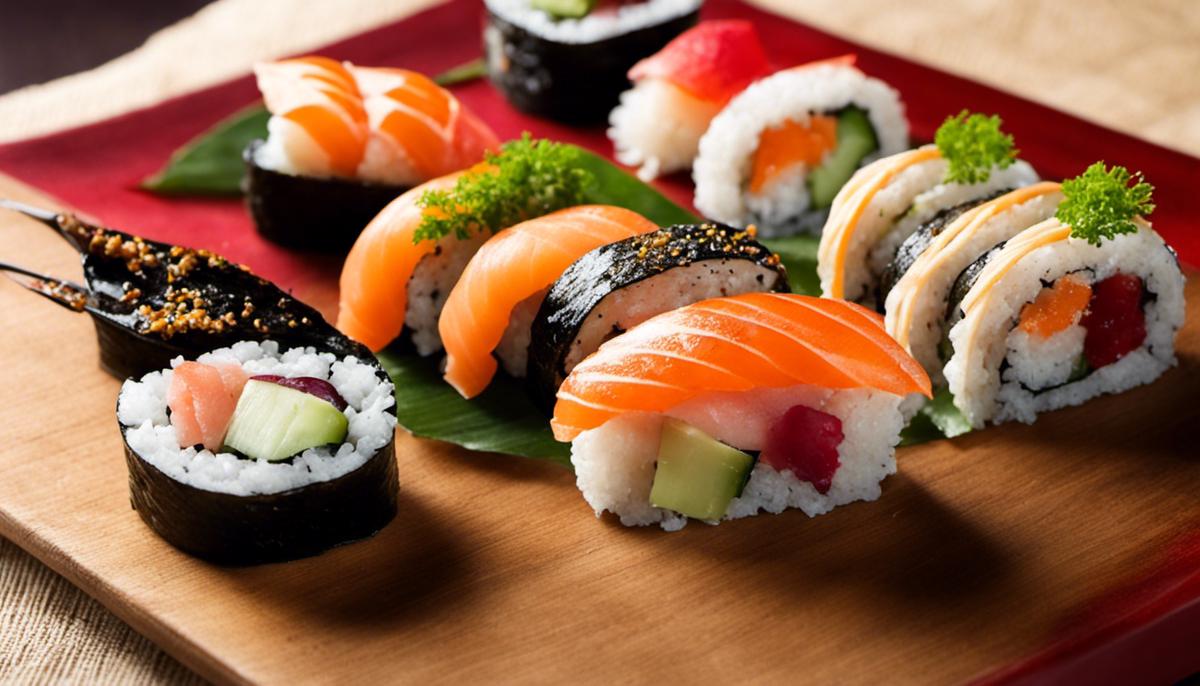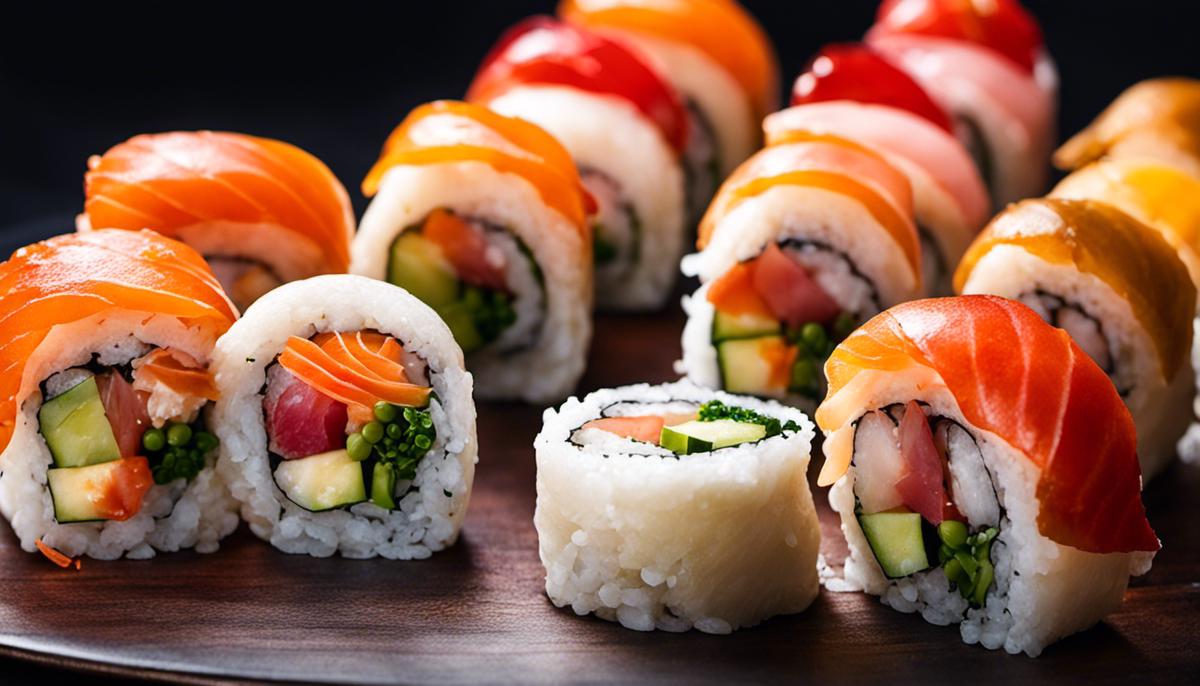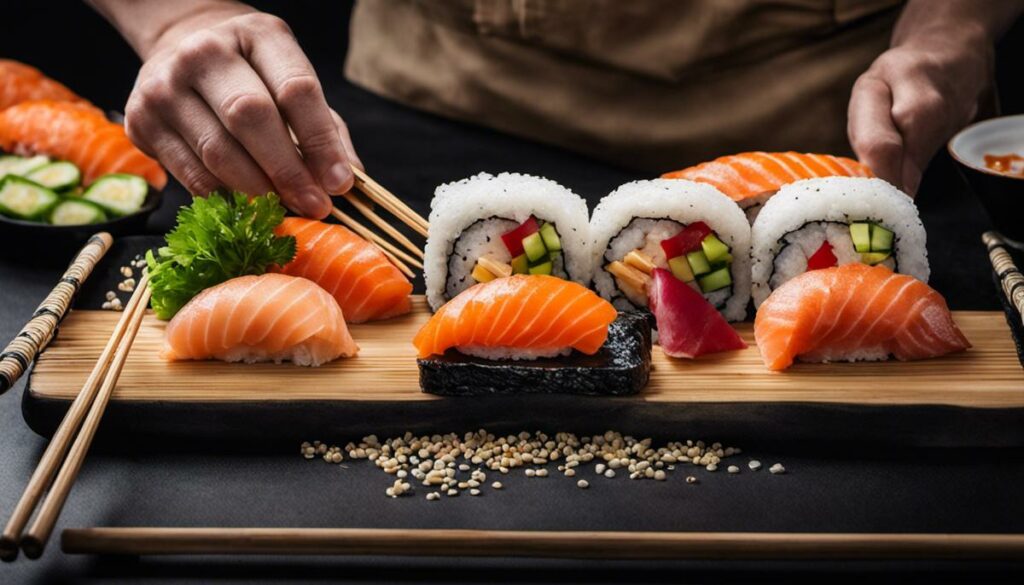The world of sushi art is fascinating and complex, encompassing a wide range of shapes, styles, and ingredients. One crucial component that makes all the difference is the use of rice vinegar. From selecting the best ingredients to presenting it in an aesthetically pleasing way, the art of sushi-making is as diverse as it is sophisticated. The rice vinegar, whose subtle balance of sweetness and acidity enlivens the sushi rice and intensifies the flavor of the raw fish, plays a central role in this. But sushi isn’t just a culinary delight. It is also a social event, linked to rituals and customs that make eating these delicate foods together a special moment.
The Art of Sushi Making
If you’re interested in the chic world of gastronomy and when it comes to making sushi, you’ve come to the right place. Sushi has always occupied a prominent place in food culture and fashion trends. However, for all sushi enthusiasts, the question is of great importance: how is sushi made and what difference does the use of rice vinegar make in it?
First of all, sushi is an elegant, artisanal product with a history that dates back many centuries. The process of making sushi is a fine art that requires patience, skill, and the right ingredients.
The preparation of sushi starts with perfectly cooked, short, sticky rice. The quality of the sushi rice is one of the crucial elements, and this is where the rice vinegar comes in. Rice vinegar is the secret ingredient that gives sushi rice its distinctive flavor. It is to this that rice owes its delicate acidity, its unique sweetness and its rich aroma.
The right balance of rice vinegar is crucial. Too much of it, and the rice could become too acidic, overpowering the taste of the fish. Too little, and the rice might appear bland, resulting in a less exciting taste experience.
In addition to the balance, the quality of the rice vinegar used also plays an immensely important role. Authentic Japanese rice vinegar, derived from fermented rice, has a mild, slightly sweet flavor that is ideal for sushi rice.
After cooking the rice, the hot rice is seasoned with a mixture of rice vinegar, sugar and salt. This duet of sweetness and acidity is really what makes sushi so fascinating. The flavored rice is then cooled and ready for the next phase: the composition.
Different styles of sushi use different fillings and toppings, ranging from raw, peeled fish to pickled vegetables or cooked seafood. Although the variety of possibilities seems endless, the ultimate joy of the sushi experience always depends on the harmony created between the rice and its accompaniment.
In conclusion, adding rice vinegar actually makes a significant difference when cooking sushi rice. Not only does it give the sushi its unique flavor, but it also emphasizes its aesthetically pleasing presentation. So, now you know what’s behind the perfect sushi – it’s the magic of rice vinegar!

The Importance of Rice Vinegar in Sushi
Rice vinegar is the invisible star that makes sushi the exquisite taste experience it is. Its inconspicuous presence is secretly responsible for the difference between everyday sushi and a culinary trip to Japan.
What is the special attraction of rice vinegar in sushi? It’s the flavor complexity it gives to sushi. A pinch of dance of sweetness and acidity found in sushi rice is possible thanks to the rice vinegar. It delivers both subtle sweet and clear sour notes that evoke an astonishing depth in the flavor of the sushi rice while bringing out the fishy flavor of the accompanying piece.
No less important is the effect of rice vinegar on the texture of sushi rice. The acetic acid in rice vinegar aids in the formation of starch gelatin in the rice and helps bind the rice grains, allowing them to hold their shape without being too papery. This is especially important because texture is an integral part of the sushi experience and has a huge impact on overall satisfaction.
Don’t forget that choosing the right rice vinegar is crucial. Be sure to give preference to high-quality rice vinegar, as it affects the flavor profile of the sushi and emphasizes the authenticity of the dish. A good rice vinegar is mild, not too acidic and has a pleasant sweet undertone that perfectly combines the flavors.
The ratio of rice, fish and rice vinegar is a delicate matter that depends on the skill and experience of the sushi master. You could say that finding the perfect balance is an art. For example, Nisease, a sushi appreciated by connoisseurs, emphasizes the delicate harmony between rice, fish and wasabi by using only a tiny amount of rice vinegar.
Lovers of aesthetics should rejoice! Rice vinegar contributes not only to the taste, but also to the aesthetics of sushi. You can see how shiny the sushi rice becomes under the gentle influence of the rice vinegar. It is a silent tribute to the beauty in everyday things, concentrating the quintessence of the Japanese aesthetic ‘wabi-sabi’.
These are just a few of the reasons why rice vinegar outranks martinis when it comes to sushi. It is an ode to the subtle art of culinary balance: a worthy complement to the texture play of sushi, a touch of complexity that invigorates the senses. Enjoy the next bite of sushi with a new understanding and admiration for rice vinegar, the unsung hero of your favorite food.

The aesthetics and social aspects of sushi
The aesthetic of sushi goes far beyond its simple components, highlighting it as an art form that contributes to the taste experience. Sushi presents itself in its most elegant form, with each element carefully coordinated. Similar to the fashion world, where the outfit determines the first impression, the visual presentation plays a big role in the preparation of sushi. It is what makes the difference between an everyday snack and a culinary work of art. If the ingredients are not arranged in an appealing way at first glance, the whole experience will be compromised.
But it’s not just the aesthetics that make sushi an experience. The social experience of eating together contributes significantly to our understanding and appreciation. Sushi is more than just a meal, it’s an event, a moment to be shared. Whether you’re going out to dinner with friends or celebrating a special occasion, the joy of enjoying yourself together is a hallmark of sushi culture. It draws parallels with the fashion industry, where sharing the latest trends and discoveries on social media has become the norm. In the same way that sharing outfits and inspiration influences fashion discourse, the social experience of eating together fosters the culture and appreciation of sushi.
The choice of sushi style, fillings, and toppings is another aspect that contributes to the aesthetics of sushi. Just as a fashion enthusiast carefully coordinates his outfit, great importance is attached to sushi that the different elements go well together. The harmony between the rice, the accompaniments and the rice vinegar is essential not only for the taste, but also for the visual experience.
All these aspects add up to an overall experience that goes deeper than just eating a culinary delicacy. They contribute to our appreciation of sushi and our thoughts on the art of making it. Sushi is not just food, but an embodiment of creativity and careful planning that goes the extra mile to create a harmonious and aesthetic experience that appeals to all the senses. Just as fashionable aesthetics have changed the way we look at and appreciate clothing, the aesthetics of sushi have redefined our perception of food and the experience of enjoying it.

Our journey through the world of sushi making and the use of rice vinegar has revealed to us an impressive variety of shapes, flavors and textures, but also social and cultural aspects. Although the process may seem technical and time-consuming, one can certainly appreciate the profound experience involved, both in terms of artisanal production and enjoyable food. Ultimately, sushi is not just a technique, but a true art form – a delicacy for the eyes and for the palate. The specific application and inclusion of rice vinegar in this process also emphasizes the importance of balance and harmony in Japanese cuisine and culture.


